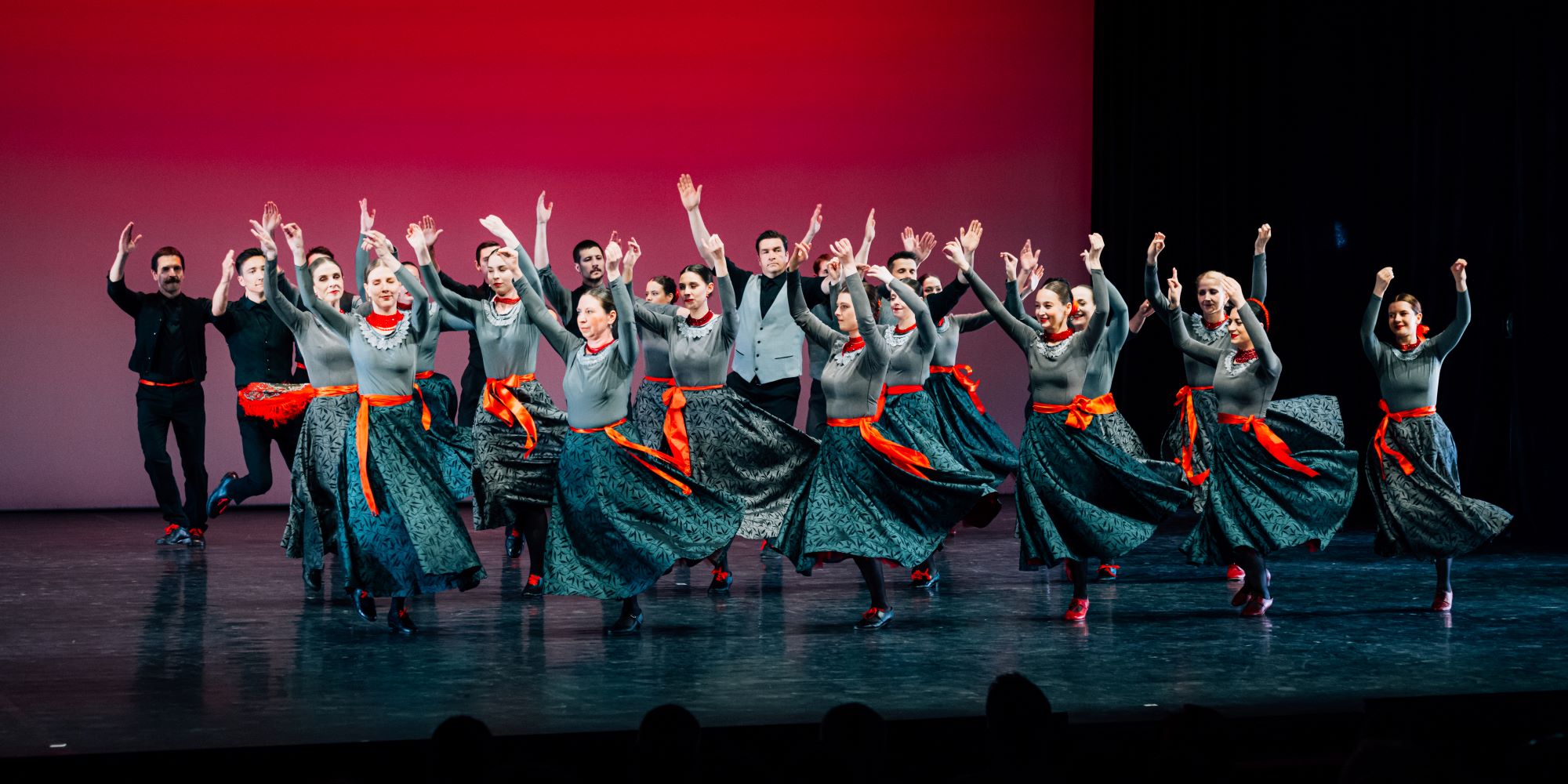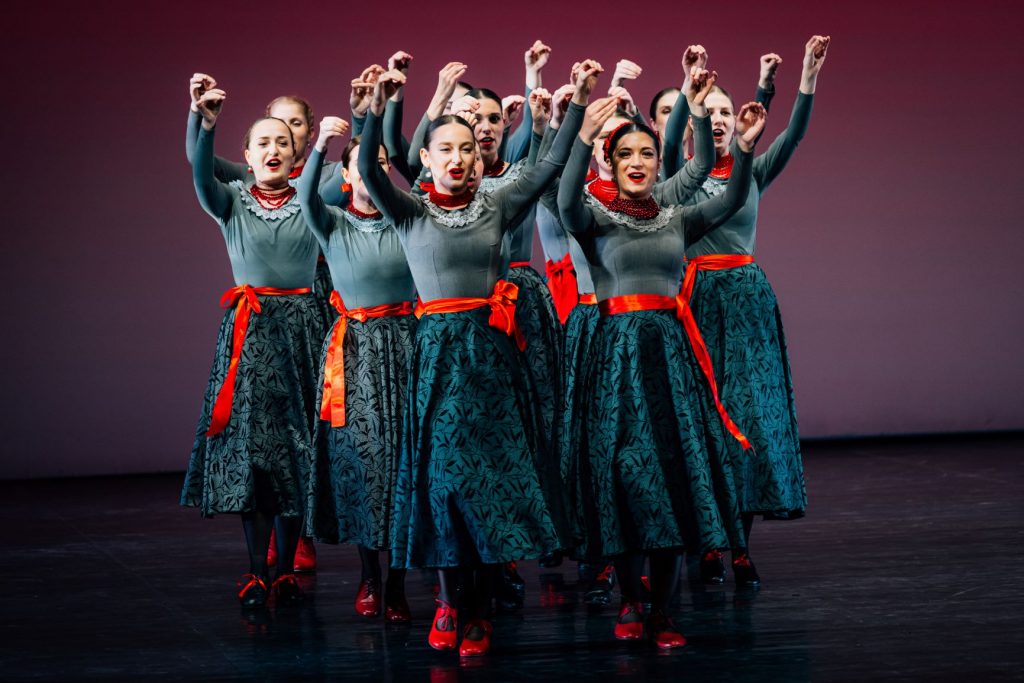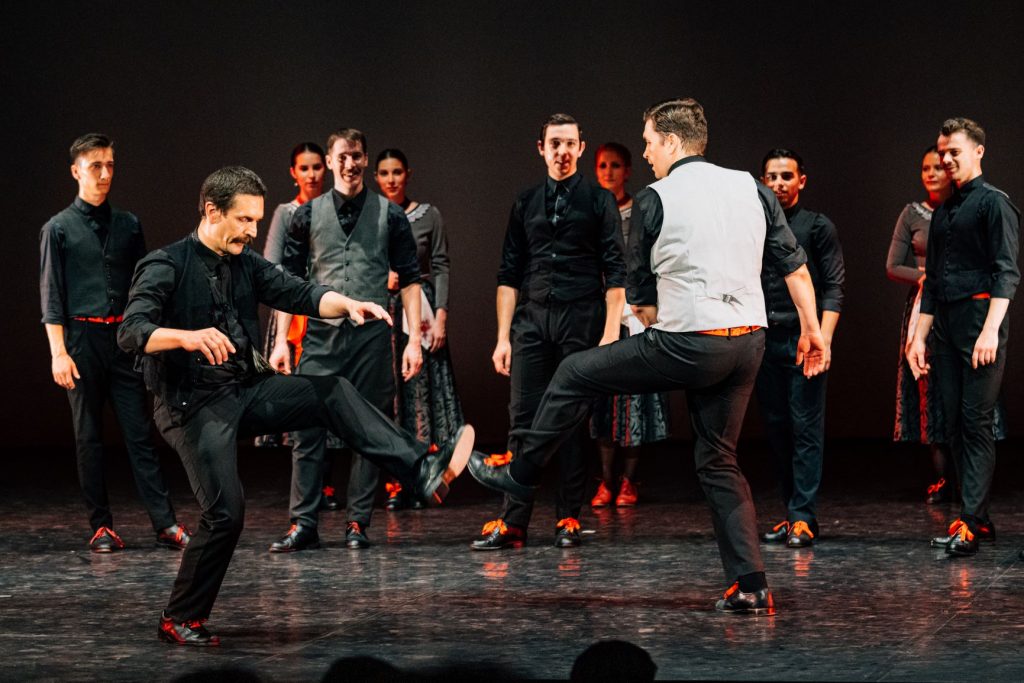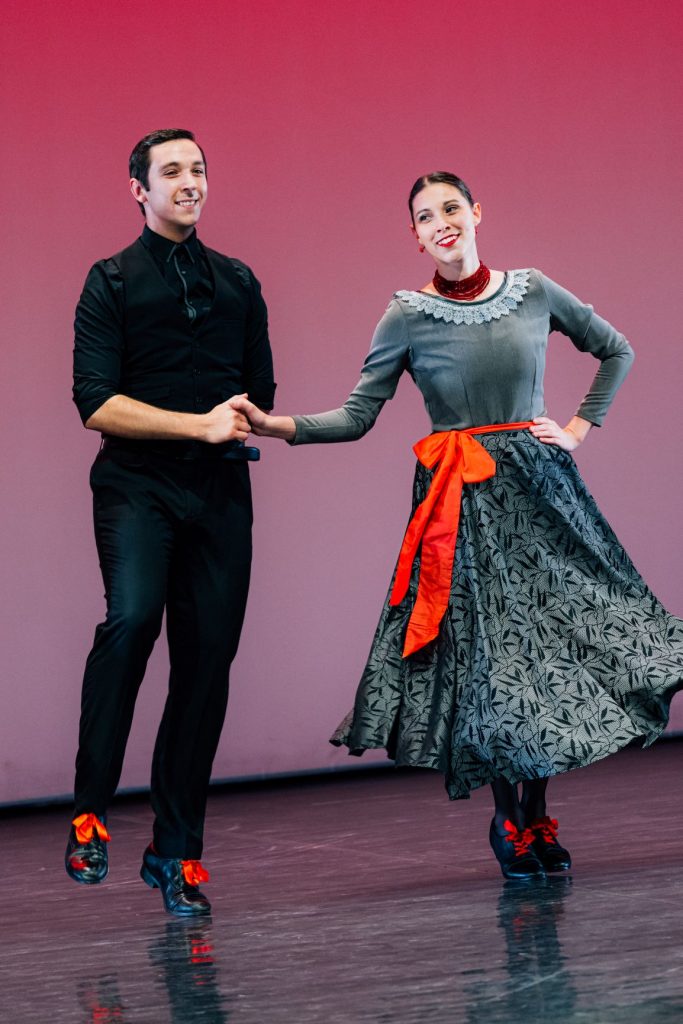
The students attending evening classes and specialising in folk dance at the Dance and Rehearsal Department of the Hungarian Dance University (HDU) concluded three years of their studies with an exam performance on 27 May at the university’s Jr Zoltán Nagy theatre hall.
The students visited the institute twice a week, studying for their exams in theory classes during the first semester of this year, and then began practical preparation for the final exam in January.

Photos by Csaba Mészáros
Szilvia Nemes, the lecturer of the Folk Dance Department, worked with the students every second Saturday. After the exam, she spoke about the concept behind the staging of the piece and shared some important thoughts about working with the class and the preparation.
Can we get a glimpse of how the preparations went?
We all know that a performance requires an awful lot of practice. For us, the timetable gave us the opportunity to do this, so we had to be very conscious of time and tasks in this respect. So what we talked about in theory in the choreography class, we put it all into practice. There was a very fine line between how it all shows on stage and how the students manage to incorporate and implement those instructions in a very short time. In addition, we need to reflect on why we are doing it. It is a difficult task to motivate a dancer in this situation and to carry out such a project. There was a lot of risks involved. They edited the etudes at the end of their training as a dancer and rehearsal director, that’s all they need to know.
What was it like working with the students?
For each group, the work starts with acceptance. The first question is whether they accept my artistic views. This group was very open and flexible in this respect. There were great classes and highs. Nevertheless, of course there were several difficulties and we also reached the bottom during the preparation where they had to overcome themselves. It is very difficult to overcome one’s own limitations. For example, in one of the seemingly simple tasks, we asked them to think in a different way and to approach choreography differently without clichés. It was difficult, as well as the fact that they had to do the choreography to text. In folk dance, everything is adapted to the music: to the musical sections, the articulation and the pulse of the music.

How was the concept for the performance created?
The concept was my own idea. Sándor Márai is my favourite writer, I am very inspired by his writings, I always discover new levels in him. One of his most famous book titled the Grass Book (Füveskönyv). It is an extract of the book that formed the basis of the play in which real-life truths are told by nationally renowned artists. These auditory stimuli are so intense that they are almost more important than the dance itself. This was also part of the curriculum, how the music is chosen, how the auditory stimuli are chosen, how a choreographer works.
Panni Andrejkovics, a student attending evening classes actually confirmed Szilvia Nemes’ words after the performance, based on her experiences and impressions.
How did the preparation go?
The work was special because it gave us an insight into the process of directing, the mysteries of choreography and the beauty and challenges of performing. We were students, creators, directors, choreographers and dancers at the same time. This collaboration created a sense of unity on stage that we all felt. Not only us, the performers but also the teachers who taught us, based on the feedback we received.

How did the exam stress affect the class?
The preparation itself and the exam day were time-pressed, so we needed each other’s support. I think this also influenced the sense of unity that was visible and tangible on stage.
What did you gain from this performance?
Márai’s words, spoken during the performance, have a profound message in themselves, but they evoke different thoughts and feelings in each person. General themes such as friendship, love, youth, relationships between men and women, but not in a general way, as we dancers tried to convey and show them through our bodies, differently from one individual to another, but still as a whole. For me, we clearly conveyed value to each other and to the audience. In my opinion, each participant put his heart, soul and lived experience into the production. I hope we will have the opportunity to pe


